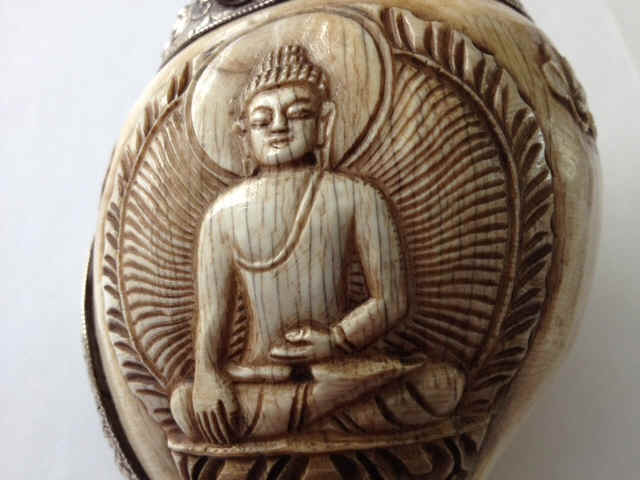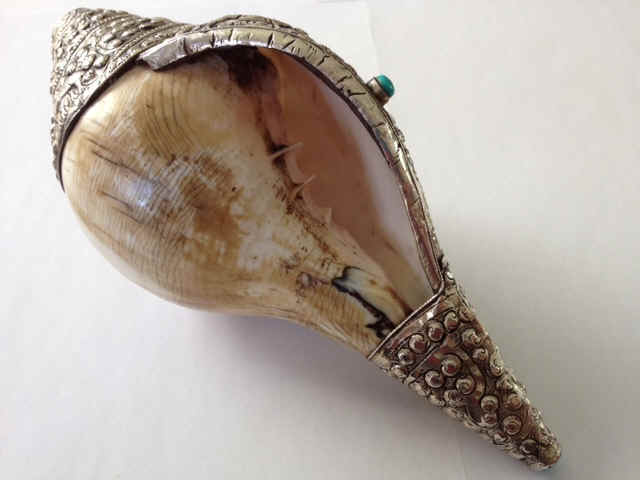


verzamelbeurs april 2012, euro 170
The scientific name of conch shells (also known as Chank shells) are Turbinella Pyrem. They are usually grown in 50 gms to 1.5 kgs in weight. They are harvested from along the sea cost of India and Pakistan. They have been used as ornament in Nepal, Tibet, India and Burma for more than 4000 years. Conch shells made into beads, necklace closer, necklaces, pendants, belts, head ornaments. In Tibet, they are also use them as altar objects which are set with silver and decorated with turquoise and coral. The conch shells are also very popular among the tribal people of Northeast India (who live in Nagaland and also Burma). The tribal people are called Nagas. Nagas love conch shells and they have been wearing conch beads and jewelry for many centuries. Therefore, these conch shells are also known as Naga shells (They are named after these Naga tribal people). These days, most of the conch shell beads and jewelry pieces come from Nepal. There are many artisans who make these conch ornamental pieces in Nepal. The artisans are from Tibet and Nagaland who settled down in Nepal due to political conflict. Conch shells go through many lengthy procedures to give them antique finish before making them into wearable art pieces. They are highly polished with sand paper, and then they are heat treated on fires which bring black veins on the pieces. Conch shells are also inlaid with turquoise, coral, and lapis to fill the ditches on the conch pieces which looks like accents on the ornamental pieces. Conch shells are also set with sterling silver and brass to make them into ornate beads, pendant and other jewelry findings from Nepal.
Shankha (Sanskrit: S'an.kha), also spelled and pronounced as Shankh and Sankha, is a conch shell of ritual and religious importance in Hinduism and Buddhism. It is the shell of a large predatory sea snail,Turbinella pyrum found in the Indian Ocean. In Hinduism the Shankha is a sacred emblem of the Hindu preserver god Vishnu. The shankha is still used as a trumpet in Hindu ritual, and was used as a war trumpet in the past. The Shankha is praised in Hindu scriptures as a giver of fame, longevity and prosperity, the cleanser of sin and the abode of Lakshmi - the goddess of wealth and consort of Vishnu. The Shankha is displayed in Hindu art in association with Vishnu. As a symbol of water, it is associated with female fertility and serpents (Na-gas). The Shankha is the state emblem of Indian state of Kerala and was national emblems of the erstwhile Indian Princely state of Travancore and Kingdom of Kochi. The Shankha is included in the list of the eight Buddhist auspicious symbols, the Ashtamangala. In Tibetan Buddhism it is known as "dung kar". A powder derived from the Shankha is used in Indian Ayurvedic medicine, primarily as a cure for stomach ailments and for increasing beauty and strength. In the Western world in the English language, the shell of this species is known as the "divine conch" or the "sacred chank". It may also be simply called a "chank" or conch.http://en.wikipedia.org/wiki/Shankha

|
764 gram, ca 20 cm lang, 95 cm breed verzamelbeurs april 2012, euro 170 |